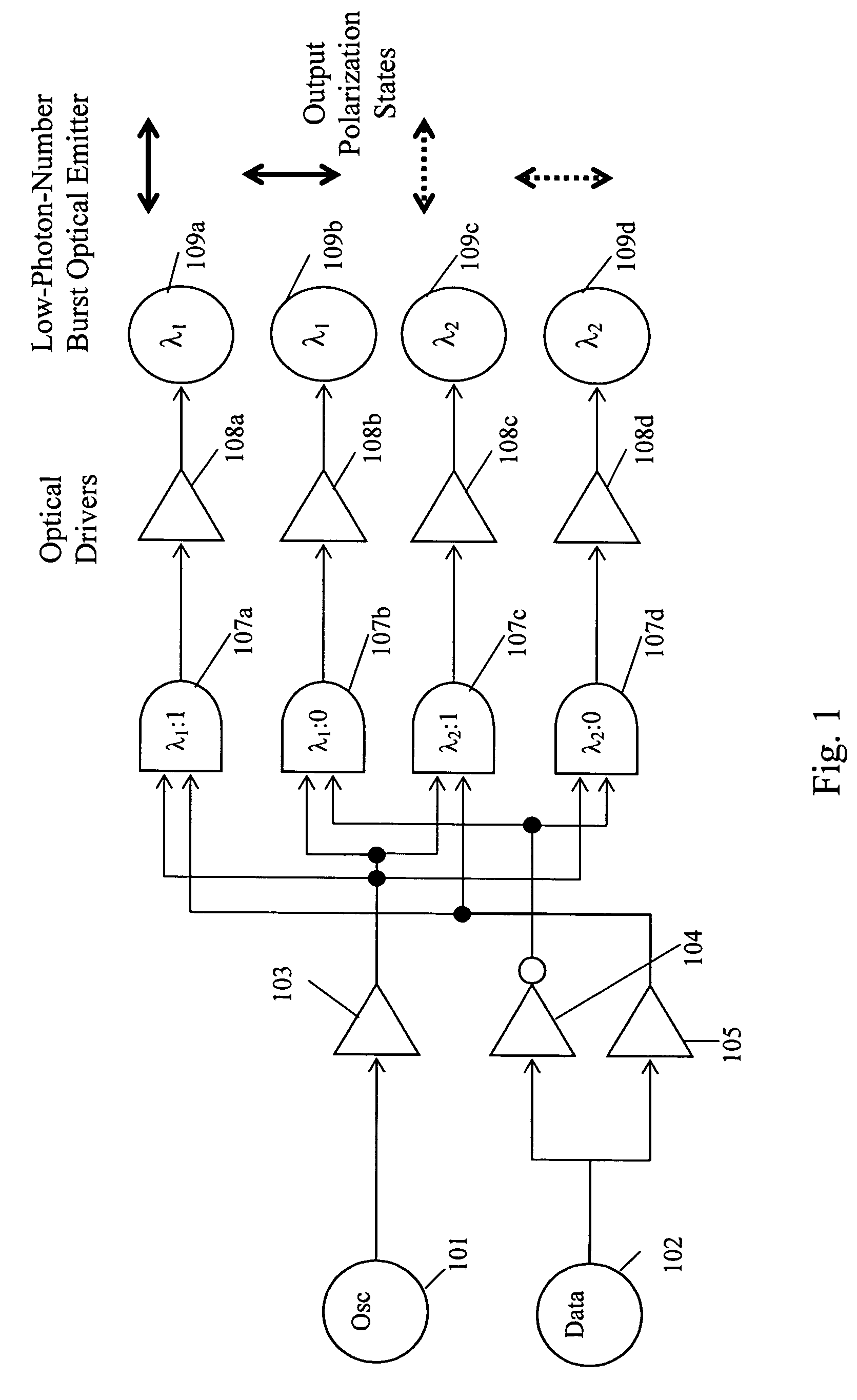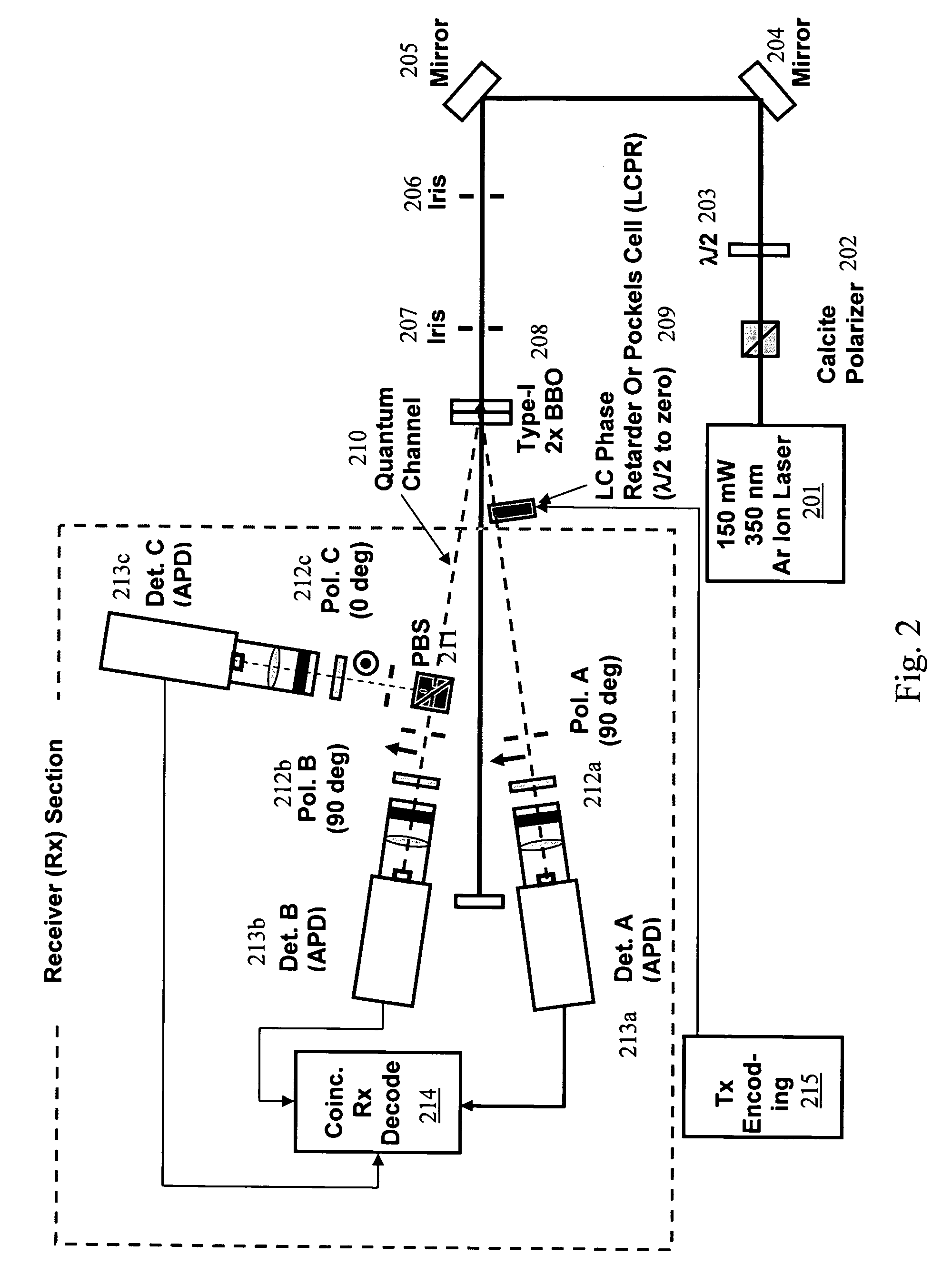Multi-wavelength time-coincident optical communications system and methods thereof
- Summary
- Abstract
- Description
- Claims
- Application Information
AI Technical Summary
Benefits of technology
Problems solved by technology
Method used
Image
Examples
Embodiment Construction
[0022]According to several embodiments, communication systems that require ultra low power are described. The systems are physically small and able to provide communications at ultra low power levels. The use of time-coincident photons provides communications at sufficiently high SNR that can operate with constrained power budgets.
[0023]One purpose of the present invention is to provide an optical transmitter that will meet the power and size requirements for a micro robotic device. This means that the transmitter is in the order of 10×10 microns in area, and require less than a micro-watt of power. This transmitter sends very low power optical pulses on a number of optical frequencies. The pulses are time coincident to within less than 1 ns apart. This time coincidence decreases the power required to get a certain level of signal to noise ratio.
[0024]A block diagram for one embodiment of the present invention is provided in FIG. 1. The device works by modulating a signal from an os...
PUM
 Login to View More
Login to View More Abstract
Description
Claims
Application Information
 Login to View More
Login to View More - Generate Ideas
- Intellectual Property
- Life Sciences
- Materials
- Tech Scout
- Unparalleled Data Quality
- Higher Quality Content
- 60% Fewer Hallucinations
Browse by: Latest US Patents, China's latest patents, Technical Efficacy Thesaurus, Application Domain, Technology Topic, Popular Technical Reports.
© 2025 PatSnap. All rights reserved.Legal|Privacy policy|Modern Slavery Act Transparency Statement|Sitemap|About US| Contact US: help@patsnap.com



